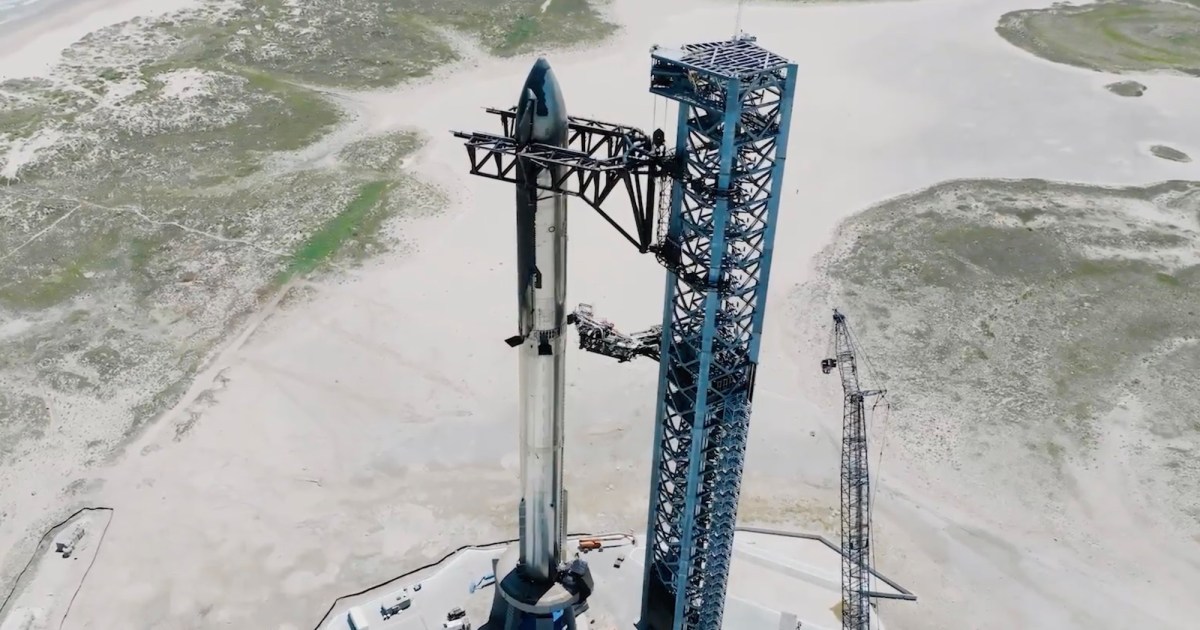
Following a series of recent engine tests, SpaceX chief Elon Musk has declared the mighty Starship rocket ready for launch … but first there’s the small matter of obtaining clearance from the Federal Aviation Administration (FAA).
SpaceX posted a short video (below) on Tuesday evening showing the first-stage Super Heavy rocket and upper-stage Starship spacecraft — collectively known as the Starship — on the launchpad at the company’s Starbase facility in Boca Chica, Texas.
The Super Heavy — most powerful rocket ever made — took its maiden flight in April, but a technical issue just a few minutes into the test mission prompted SpaceX engineers to perform a controlled explosion on the rocket that brought the flight to an abrupt end.
But that wasn’t the only problem. The 17 million pounds of thrust blasted out by the Super Heavy’s 33 Raptor engines caused the launchpad to disintegrate, sending concrete and other materials far beyond the launch site.
To overcome the issue, SpaceX engineers have designed and tested a water-cooled flame deflector, a water-deluge system made of steel that’s capable of handling the immense heat and force generated by the rocket as it leaves the launchpad.
But before the rocket’s engines can be ignited for the second test flight, the FAA has to complete an assessment into the impact of the first flight on the area surrounding the launch site. Environmental groups have also been expressing concerns, and claim that prior to the first flight the FAA failed to adequately gauge the extent of the environmental damage that SpaceX’s rocket would cause.
When fully tested, SpaceX wants to use the Super Heavy for crewed missions to the moon, Mars, and possibly places even further out in space. Musk’s company already has a contract with NASA to use a modified version of the upper stage — the Starship spacecraft — for the Artemis III crewed landing on the moon, which is currently scheduled for 2025.
It means there’s a lot resting on the next test flight, as another failure could impact the already tight timeline for NASA’s first crewed lunar landing in five decades.
Editors’ Recommendations
Services Marketplace – Listings, Bookings & Reviews
